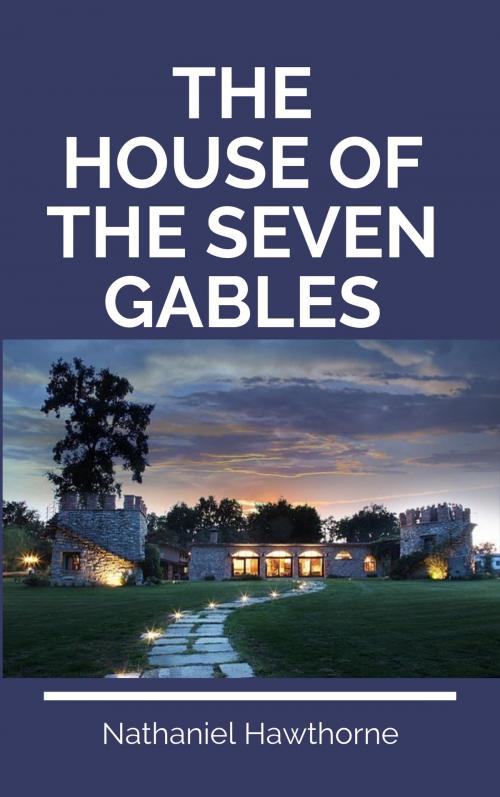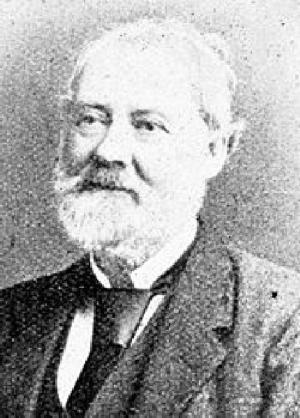| Author: | Nathaniel Hawthorne | ISBN: | 1230003193440 |
| Publisher: | C. Levy | Publication: | April 19, 2019 |
| Imprint: | Language: | French |
| Author: | Nathaniel Hawthorne |
| ISBN: | 1230003193440 |
| Publisher: | C. Levy |
| Publication: | April 19, 2019 |
| Imprint: | |
| Language: | French |
HALFWAY down a by-street of one of our New England towns stands a rusty wooden house, with seven acutely peaked gables, facing towards various points of the compass, and a huge, clustered chimney in the midst. The street is Pyncheon Street; the house is the old Pyncheon House; and an elm-tree, of wide circumference, rooted before the door, is familiar to every town-born child by the title of the Pyncheon Elm. On my occasional visits to the town aforesaid, I seldom failed to turn down Pyncheon Street, for the sake of passing through the shadow of these two antiquities,—the great elm-tree and the weather-beaten edifice.
The aspect of the venerable mansion has always affected me like a human countenance, bearing the traces not merely of outward storm and sunshine, but expressive also, of the long lapse of mortal life, and accompanying vicissitudes that have passed within. Were these to be worthily recounted, they would form a narrative of no small interest and instruction, and possessing, moreover, a certain remarkable unity, which might almost seem the result of artistic arrangement. But the story would include a chain of events extending over the better part of two centuries, and, written out with reasonable amplitude, would fill a bigger folio volume, or a longer series of duodecimos, than could prudently be appropriated to the annals of all New England during a similar period. It consequently becomes imperative to make short work with most of the traditionary lore of which the old Pyncheon House, otherwise known as the House of the Seven Gables, has been the theme. With a brief sketch, therefore, of the circumstances amid which the foundation of the house was laid, and a rapid glimpse at its quaint exterior, as it grew black in the prevalent east wind,—pointing, too, here and there, at some spot of more verdant mossiness on its roof and walls,—we shall commence the real action of our tale at an epoch not very remote from the present day. Still, there will be a connection with the long past—a reference to forgotten events and personages, and to manners, feelings, and opinions, almost or wholly obsolete—which, if adequately translated to the reader, would serve to illustrate how much of old material goes to make up the freshest novelty of human life. Hence, too, might be drawn a weighty lesson from the little-regarded truth, that the act of the passing generation is the germ which may and must produce good or evil fruit in a far-distant time; that, together with the seed of the merely temporary crop, which mortals term expediency, they inevitably sow the acorns of a more enduring growth, which may darkly overshadow their posterity.
HALFWAY down a by-street of one of our New England towns stands a rusty wooden house, with seven acutely peaked gables, facing towards various points of the compass, and a huge, clustered chimney in the midst. The street is Pyncheon Street; the house is the old Pyncheon House; and an elm-tree, of wide circumference, rooted before the door, is familiar to every town-born child by the title of the Pyncheon Elm. On my occasional visits to the town aforesaid, I seldom failed to turn down Pyncheon Street, for the sake of passing through the shadow of these two antiquities,—the great elm-tree and the weather-beaten edifice.
The aspect of the venerable mansion has always affected me like a human countenance, bearing the traces not merely of outward storm and sunshine, but expressive also, of the long lapse of mortal life, and accompanying vicissitudes that have passed within. Were these to be worthily recounted, they would form a narrative of no small interest and instruction, and possessing, moreover, a certain remarkable unity, which might almost seem the result of artistic arrangement. But the story would include a chain of events extending over the better part of two centuries, and, written out with reasonable amplitude, would fill a bigger folio volume, or a longer series of duodecimos, than could prudently be appropriated to the annals of all New England during a similar period. It consequently becomes imperative to make short work with most of the traditionary lore of which the old Pyncheon House, otherwise known as the House of the Seven Gables, has been the theme. With a brief sketch, therefore, of the circumstances amid which the foundation of the house was laid, and a rapid glimpse at its quaint exterior, as it grew black in the prevalent east wind,—pointing, too, here and there, at some spot of more verdant mossiness on its roof and walls,—we shall commence the real action of our tale at an epoch not very remote from the present day. Still, there will be a connection with the long past—a reference to forgotten events and personages, and to manners, feelings, and opinions, almost or wholly obsolete—which, if adequately translated to the reader, would serve to illustrate how much of old material goes to make up the freshest novelty of human life. Hence, too, might be drawn a weighty lesson from the little-regarded truth, that the act of the passing generation is the germ which may and must produce good or evil fruit in a far-distant time; that, together with the seed of the merely temporary crop, which mortals term expediency, they inevitably sow the acorns of a more enduring growth, which may darkly overshadow their posterity.















